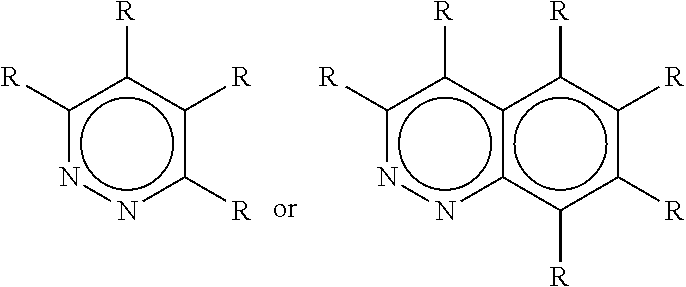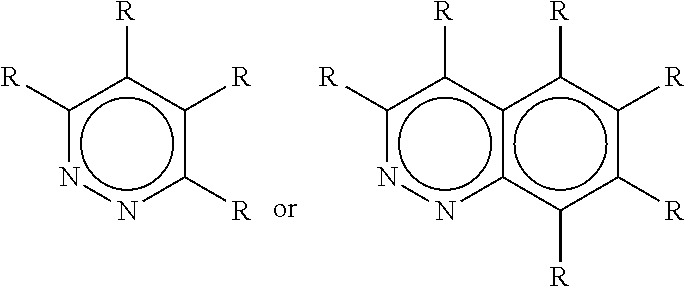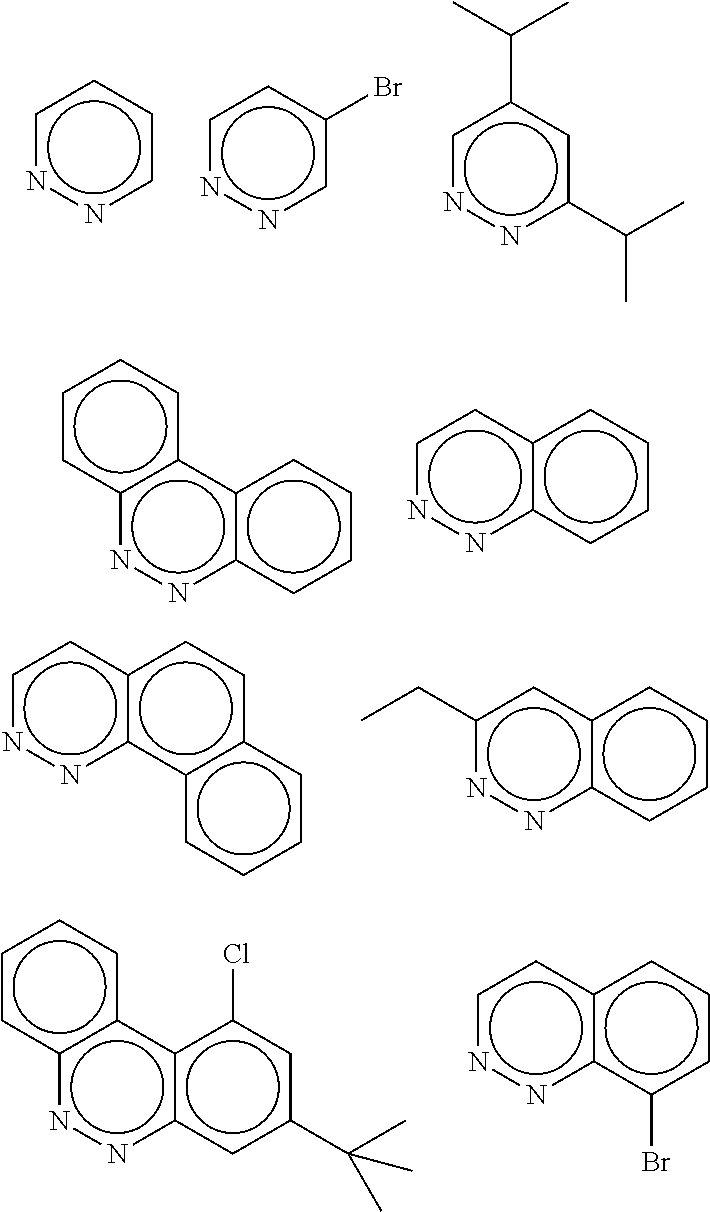Pyridazine-modified ziegler-natta catalyst system
a catalyst system and pyridazine technology, applied in the field of zieglernatta catalyst system modification, can solve the problems of large amount of expensive activators for single-site catalysts, and no one has studied simple pyridazine compounds as components of ziegler
- Summary
- Abstract
- Description
- Claims
- Application Information
AI Technical Summary
Benefits of technology
Problems solved by technology
Method used
Image
Examples
example 1
Modified Ziegler-Natta Catalyst System
[0030]A magnesium chloride and ethanol adduct is prepared following the method described in Example 2 of U.S. Pat. No. 4,399,054, but working at 2000 RPM instead of 10,000 RPM. The adduct is treated thermally under a nitrogen stream, over a temperature range of 50-150° C., until a weight content of 25% of ethanol is reached. In a 2-L four-neck flask, purged with nitrogen, TiCl4 (1 L) is charged at 0° C. followed by the spherical MgCl2 / ethanol adduct (70 g). The temperature is raised to 130° C. in 2 hours and maintained for 1 hour. The to stirring is discontinued, the solid product is allowed to settle, and the supernatant liquid is removed by siphoning. Fresh TiCl4 is charged to the flask, the temperature is brought to 110° C. and maintained for 60 minutes. The stirring is discontinued, the solid product is allowed to settle, and the supernatant liquid is removed by siphoning. The solid residue is washed once with heptane at 80° C., five times w...
example 2
[0032]Isobutane (1 L), 1-butene (20 mL), and 1M triethylaluminum solution in hexanes (4 mL) are added to a dry, stainless-steel 2-L autoclave reactor. The reactor is heated to 80° C. and hydrogen is added from a 300-mL vessel at 4.10 MPa to effect a pressure drop of 0.34 MPa. The reactor is pressurized to 0.7 MPa with ethylene. The polymerization reaction is started by injecting the modified catalyst system from Example 1. The temperature is maintained at 80° C. and ethylene is supplied on demand to maintain the reactor pressure of 0.7 MPa. After 64 minutes, the polymerization is terminated by venting the autoclave. The resulting polyethylene is dried and tested.
[0033]Yield: 46 g. Activity: 2100 g polyethylene per g supported titanium compound per hour. By GPC, the polyethylene has a weight-average molecular weight (Mw) of 193,000 and a Mw / Mn of 6.0. Branching (by FT-IR spectroscopy): 6.0 tertiary carbons per 1000 carbons. Percent crystallinity (by differential scannin...
PUM
| Property | Measurement | Unit |
|---|---|---|
| molar ratio | aaaaa | aaaaa |
| diameters | aaaaa | aaaaa |
| diameters | aaaaa | aaaaa |
Abstract
Description
Claims
Application Information
 Login to View More
Login to View More - R&D
- Intellectual Property
- Life Sciences
- Materials
- Tech Scout
- Unparalleled Data Quality
- Higher Quality Content
- 60% Fewer Hallucinations
Browse by: Latest US Patents, China's latest patents, Technical Efficacy Thesaurus, Application Domain, Technology Topic, Popular Technical Reports.
© 2025 PatSnap. All rights reserved.Legal|Privacy policy|Modern Slavery Act Transparency Statement|Sitemap|About US| Contact US: help@patsnap.com



